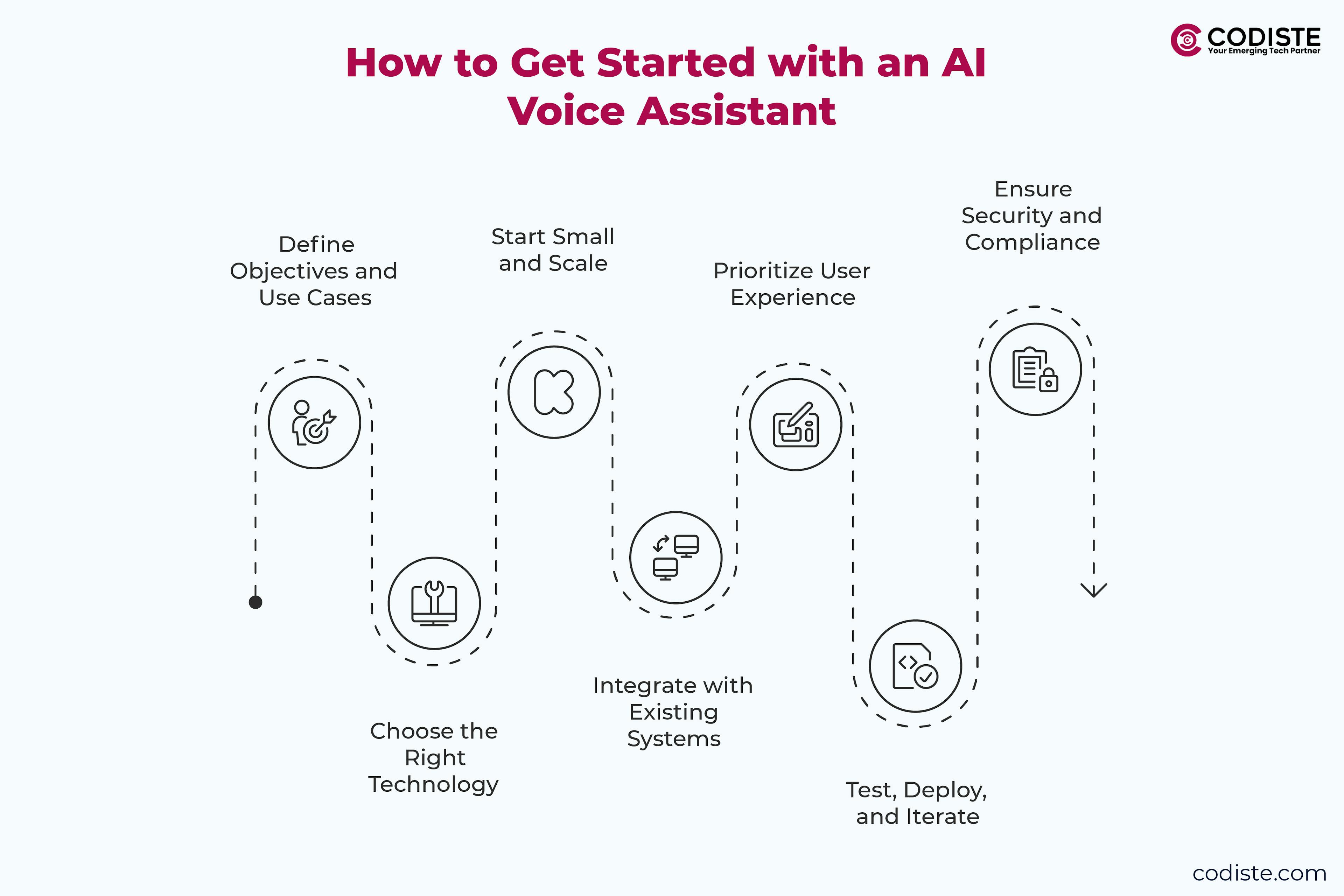
,
Customers demand swift responses in today's hyperconnected, always-on marketplace, whether they are following up on a lead, scheduling an appointment, or answering a question. Meeting these demands around the clock, however, is expensive and operationally difficult for many small and mid-sized businesses.
An AI voice assistant for business can handle calls, manage inquiries, set up meetings, qualify leads, and even finalize deals without manual assistance. Your business can now run 24x7, reduce customer service expenses, and provide quicker, more reliable experiences by implementing an AI voice assistant.
This blog will explain why AI voice technology is now essential rather than optional and how you can incorporate one for your business. Let’s start.
What is an AI Voice Assistant for Business?
An AI voice assistant for business is a software application that utilizes AI, particularly natural language processing and machine learning, to facilitate communication and automate various tasks through voice interactions. To improve workflows, these assistants can schedule appointments, respond to client inquiries, and interact with corporate systems.
Why do Companies use AI Voice Assistants?
Faster, More Efficient Communication
Compared to conventional typing or manual interfaces, AI voice assistants allow users to interact and do tasks far more quickly.
Hands-Free, Multitasking Capabilities
Voice assistants enable employees to manage systems without using physical touch, as manual entry is time-consuming. This hands-free feature can improve productivity and safety, especially in workplaces where personnel must manage important communications while performing other activities.
Intuitive and Inclusive User Experience
Voice interfaces are more intuitive and natural than text-based ones. Additionally, they can be integrated with translation services and support a variety of languages, removing linguistic barriers for both clients and staff.
Personalization and Emotional Context
AI voice assistants can customize interactions based on the user's choices, language, and circumstances. They can express tone and emotion, reducing ambiguity and promoting clearer communication than text-based systems.
Productivity and Operational Efficiency
AI voice assistants disable repetitive tasks, improve meeting management, manage scheduling, handle inventory, and even update IT and HR operations. This automation allows focusing on higher-value tasks and thus saves billions of work hours across businesses.
Enhanced Customer Service and Insights
Voice assistants can answer frequently asked questions, track important client data, and offer round the clock customer service. Improved consumer happiness results from this, and companies may use real-time data to improve their marketing and product offerings.
Accessibility and Inclusivity
AI voice assistants boost accessibility by allowing those with disabilities to operate your services and workplace tools without using their hands.
The future of business communication is voice-enabled and AI-driven.
Are you ready to take the first step?
How to Get Started with an AI Voice Assistant
1. Define Objectives and Use Cases
Determine the precise business issues you wish to address first. Choose if you want to streamline IT or HR, automate internal procedures, or improve customer service. Determine which jobs or workflows will benefit most from a voice assistant.
2. Choose the Right Technology
Choose the AI technology that best suits your goals. For straightforward conversational tasks, a chatbot might be adequate. A full-featured virtual assistant is a good option for more complicated requirements, such as extensive customisation or system integration. Machine learning models and natural language processing (NLP ) are important technologies.
3. Start Small and Scale
Start by focusing on a specific use case, such as automating appointment scheduling or responding to frequently asked client questions. By doing this, you can test the assistant's effectiveness and improve its capabilities before moving on to new areas.

4. Integrate with Existing Systems
For smooth process automation and data access, make sure your voice assistant can interface with the business apps you currently use, such as CRM, HR, IT, inventory, and others.
5. Prioritize User Experience
Make the assistant easy to use by including accessibility features and support for several languages. To increase engagement, tailor responses according to user information and preferences.
6. Test, Deploy, and Iterate
Test the helper extensively in practical situations. Gather input, track performance, and keep enhancing its features under user requirements and corporate objectives.
7. Ensure Security and Compliance
Ensure adherence to pertinent rules and put strong data security procedures in place, particularly when managing sensitive data.
What are the Best AI Voice Assistant Tools for Businesses?
Here are the top 5 AI voice assistant tools for small and medium businesses:
1. Dialora.ai
Purpose-built for SMBs across industries, Dialora.ai offers:
- 24/7 AI voice agents that can answer calls, schedule appointments, and handle inquiries.
- Customizable scripts and industry-specific templates.
- CRM integrations and real-time analytics.
- Affordable pricing tailored to small business needs.
Best For: Local service businesses looking to automate call handling and lead capture.
2. Google Dialogflow
A powerful voice and chatbot development platform by Google:
- Natural language understanding (NLU) with support for multiple languages.
- Integrates easily with Google Cloud, phone systems, and apps.
- Requires some technical setup, but is highly customizable.
Best for: Tech-savvy SMBs with internal developers or agencies building custom solutions.
3. Tidio AI
A customer service platform combining live chat with AI automation:
- Voice and chat support with seamless handoff to humans.
- Integrates with Shopify, WordPress, and CRMs.
- Easy drag-and-drop chatbot builder.
Best for: E-commerce stores and growing customer service teams.
4. Kore.ai
Enterprise-grade voice and chatbot assistant platform with SMB solutions:
- Powerful NLU and prebuilt templates for multiple industries.
- Voice AI that supports phone systems, mobile apps, and websites.
- Omnichannel deployment with analytics.
Best for: SMBs wanting scalable, multi-channel customer engagement
5. Conversica
An AI assistant that focuses on sales and lead engagement:
- Automatically follows up with leads via voice and email.
- Integrates with major CRMs (Salesforce, HubSpot, etc.).
- Uses natural, human-like responses to drive conversions.
Best for: SMBs looking to automate sales outreach and follow-ups.
Conclusion
AI voice assistants for business have rapidly evolved into crucial assets for businesses seeking to stay profitable, flexible, and productive. These are no longer just future gimmicks. These intelligent agents are revolutionizing the way modern businesses function by simplifying customer interactions, providing 24/7 availability, and revealing real-time analytics.
Integrating best voice AI solutions can help you lower expenses, increase customer happiness, and scale operations without expanding your workforce, regardless of whether you're a small business or a local service provider. You can start small, pick things up quickly, and create a more intelligent, flexible customer experience engine with the correct approach and resources, such as Dialora.ai. We at Codiste have the expertise to make a perfect voice AI assistant like Dialora. Get your own AI voice agent journey started with us here.




